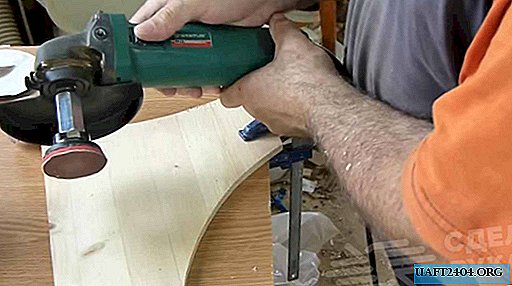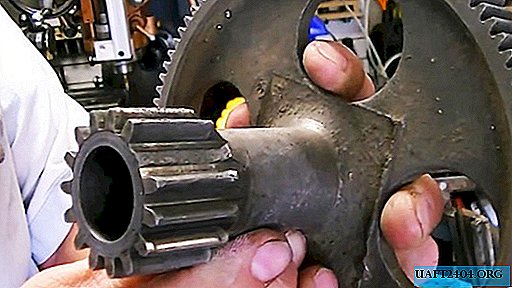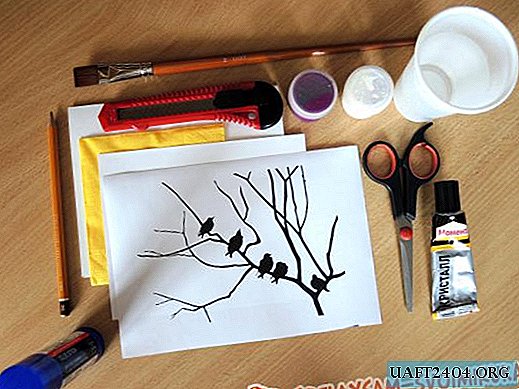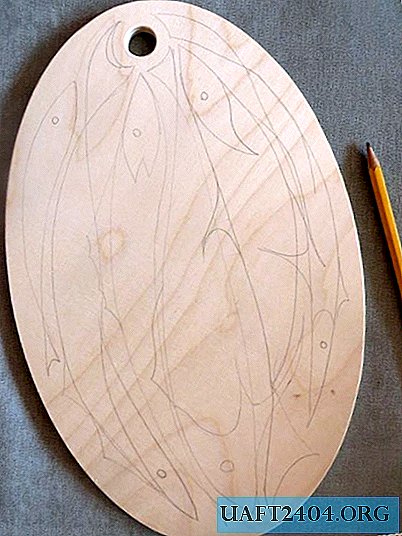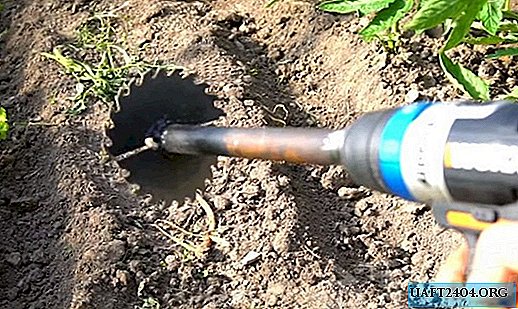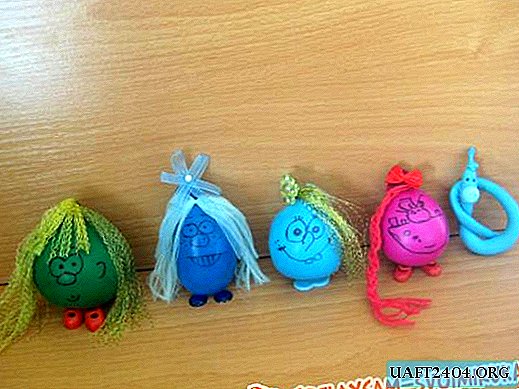Share
Pin
Tweet
Send
Share
Send

Experienced craftsmen to sample the bowl (recess) in a wooden spoon, and this is perhaps the most difficult and critical operation in the manufacture of such a product, can do with a semicircular joiner's chisel. If you do not have the practice of working on wooden crafts, then manipulating such a standard tool will not be very convenient and productive.

For a beginner woodcarver, it will be better to use a special chisel - a staple (klukarzoy, spoon cutter) of a full circle when making a spoon from a tree. The cutting edge of such a tool, in contrast to the usual joiner's chisel - the end, is the side edge. That is, the brace does not cut so much as it braces.
Is it possible to make a full circle brace from improvised materials, and what tools and devices will be needed for this? Is the work of a beginner capable of such work?
Essential Tools, Materials, and Skills
Experience shows that to make yourself a brace on wood is within the power of anyone who has ever held a grinder and a drill in their hands. In addition to these tools, you will need:
- device for mechanical grinding (grinder);
- Dremel (small drill) with nozzles;
- sandpaper with grit P600;
- mechanical felt polishing wheel;
- flat hand file on wood;
- screwdriver with a plastic handle;
- hammer;
- bench vise, etc.
The necessary materials are represented by a 19 spanner, as the most suitable in size and ease of use, as well as a finished wooden handle with an amplification ring-cap.
The procedure for making a homemade bracket

The choice of a suitable key was between size 17 and 19. After a preliminary fitting on the arm and imitation of working movements, the key was preferred to 19. It is more convenient for an adult than its counterpart to 17.
We clamp the selected key-blank into a bench vise and cut off the part with the horn of the nut by the grinder. To avoid damage to the hands during further processing, we round the edges with an endless grinding belt of the grinder.


Then, with the help of a dremel and a nozzle in the form of a grinding stone, we smooth the inner faces of the key, periodically cooling the workpiece in water. This operation is completed with the disappearance of the nut profile.


We finish the final processing of the former grip of the ring spanner by replacing the first nozzle with a dremel with another, with a finer grain size of the stone.
Next, we mark with a marker on both sides of the handle at the point where it adjoins the recess head. They will provide a more comfortable grip on the future woodworking tool.

The operation itself is performed by a grinder, having previously clamped the workpiece in a bench vise. The final refinement of the place of the last processing and earlier operations is carried out on the grinder, with particular attention to the place of the future blade for removing wood.


Another metal removal is carried out using a small drill with a grinding stone. We remove at the top of the circle at the junction with the handle also for the convenience of the future klukarzu. We select the sample sizes with the transition to the handle under our hand, from time to time applying a thumb to it to check convenience.


Now you can finally walk a dremel with a fine-grained grinding stone over all surfaces subjected to processing.
After this, you can still try the brackets that are still not ready, trying to remove the layer of wood from the recess of the spoon blank. Of course, this will not be done so easily, since the tool blade has not been finalized yet, but you can feel the process.
To adjust the blade to the required sharpness, twist the emery paper with a grain of P600 outward into a tight tube and carefully grind the inside of the cutting circle with reciprocating movements.

After this operation, a sample of our tool on a spoon blank shows that the cutting properties of the home-made staple have increased significantly and it is almost completely ready for use.

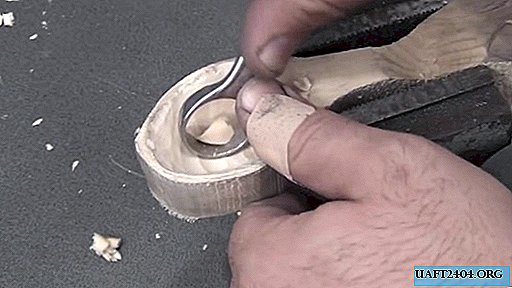
Next, using a mechanical felt wheel, we polish the tool to give it a decent appearance.

It remains only to choose a suitable finished wooden handle that would be convenient to use.

In order for the tool to firmly and reliably "sit" in place, we fix the almost finished workpiece in a bench vise and use the grinder to remove the roundness of the holder.


We adjust the length of the holder, cutting off the excess with a grinder. We also give the hole in the handle a rectangular shape in cross section using a combined drill clamped in the drill chuck, and finish it with a hand file on wood.

In order not to damage the cutting circle of the tool, and at the same time securely fix it in the handle, we use a strong screwdriver with a plastic handle firmly clamped in a vice as an emphasis.


The cutting circle, leaning on the handle of a screwdriver in the area of the holder, will not experience any deformation when the wooden handle is mounted using hammer blows and will retain all its cutting properties.
To prove this, let's try to make a deepening in the first piece of wood that turned up under my arm. It turns out quite symmetrical in shape and purity of processing without much effort and stress. Home-made staple is completely ready in order to make wooden spoons and other products with its help.


Additional Information
Using a chrome vanadium steel wrench to make a wood cutter is not rational. Such steel has insufficient hardness to use for woodcarving. For such purposes, high-carbon steels are best suited for making cutters, taps, reamers, and other metal tools.
Which tree species are best suited for carving wooden dishes? This important question worries many novice carvers. For the manufacture of spoons, blanks are best suited from solid, but not prickly hardwood - aspen, ash, maple, birch, elm, walnut, cherry or maple. Coniferous wood for these purposes will not be suitable because of the increased resinity.
To make wooden spoons last longer and look more attractive, they are recommended to be treated with special finishing compounds. The choice of option depends on the purpose of the wood products. With spoons cut out for decorative purposes, no problem. Any paint is suitable for them, they can be coated with any varnish or wax composition.

If spoons are made for their intended purpose - use for eating, then some caution is necessary. The impregnating composition should be practical and safe. Flaxseed oil, as well as special mineral oils, best meets these requirements.
Share
Pin
Tweet
Send
Share
Send


